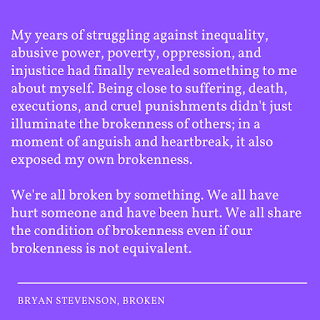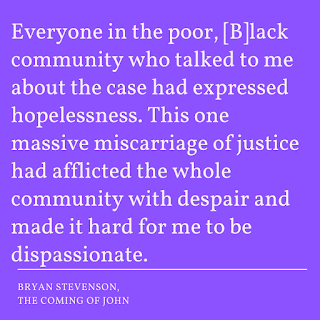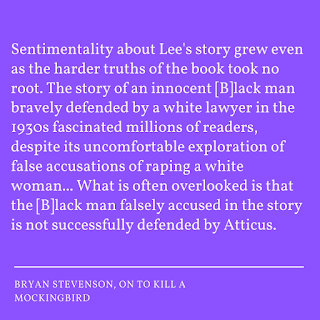Just Mercy: Conclusion

Stevenson, B. (2014). Just Mercy. New York: One World Publishing. Pages 227-316. In my last blog post, I wished for peace for Walter McMillian. I soon learned it would not come to pass. In the chapters since 'I'll Fly Away', we see further systemic issues in Alabama through other clients in Stevenson's care. We also see the same systemic issues through the subsequent decline in Walter's health. As Walter's mental and physical health deteriorated into advanced dementia, the McMillians were faced with a new issue: How would they secure long-term assisted living for someone with a criminal record? Stevenson's conversation with Walter was heartbreaking: The only care they'd been able to secure for him was so clinical, he thought he'd been placed back on death row. He hoped Stevenson could get him off again, except there was one problem -- he wasn't in prison. He was in a hospital, and it was there he would need to stay to receive the only care


